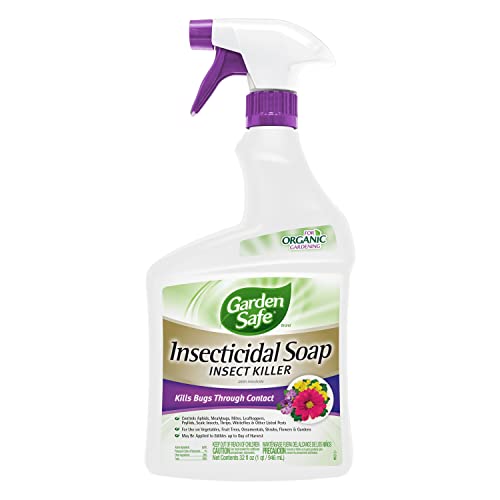How to identify tomato hornworms and get rid of these large, highly destructive pests
Fast action is key to combatting these insatiable pests - so here are the signs to look out for
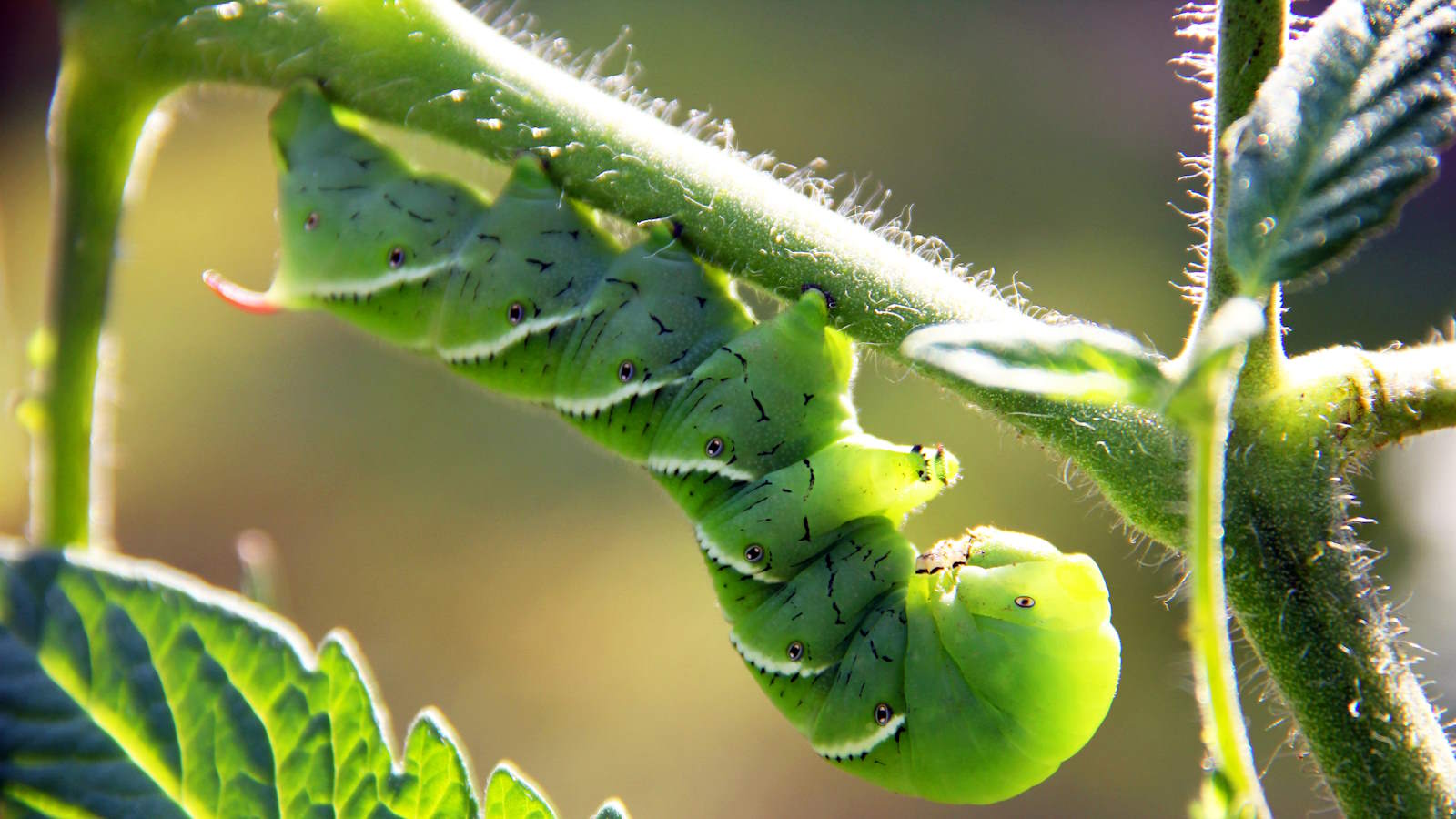

Tomato hornworms are hugely destructive pests that can decimate tomato plants with their voracious appetite. The caterpillars are large and distinctive and eat consistently - capable of completely defoliating plants.
Such a devastating pest is the nightmare of anyone growing tomatoes. Despite their size, they can be easily camouflaged and you may only be aware of their presence once you start seeing the signs of damage.
Those signs can include munched leaves and fruit. However, there are ways to prevent or combat tomato hornworms if you spot them so you can get a harvest of delicious tomatoes.
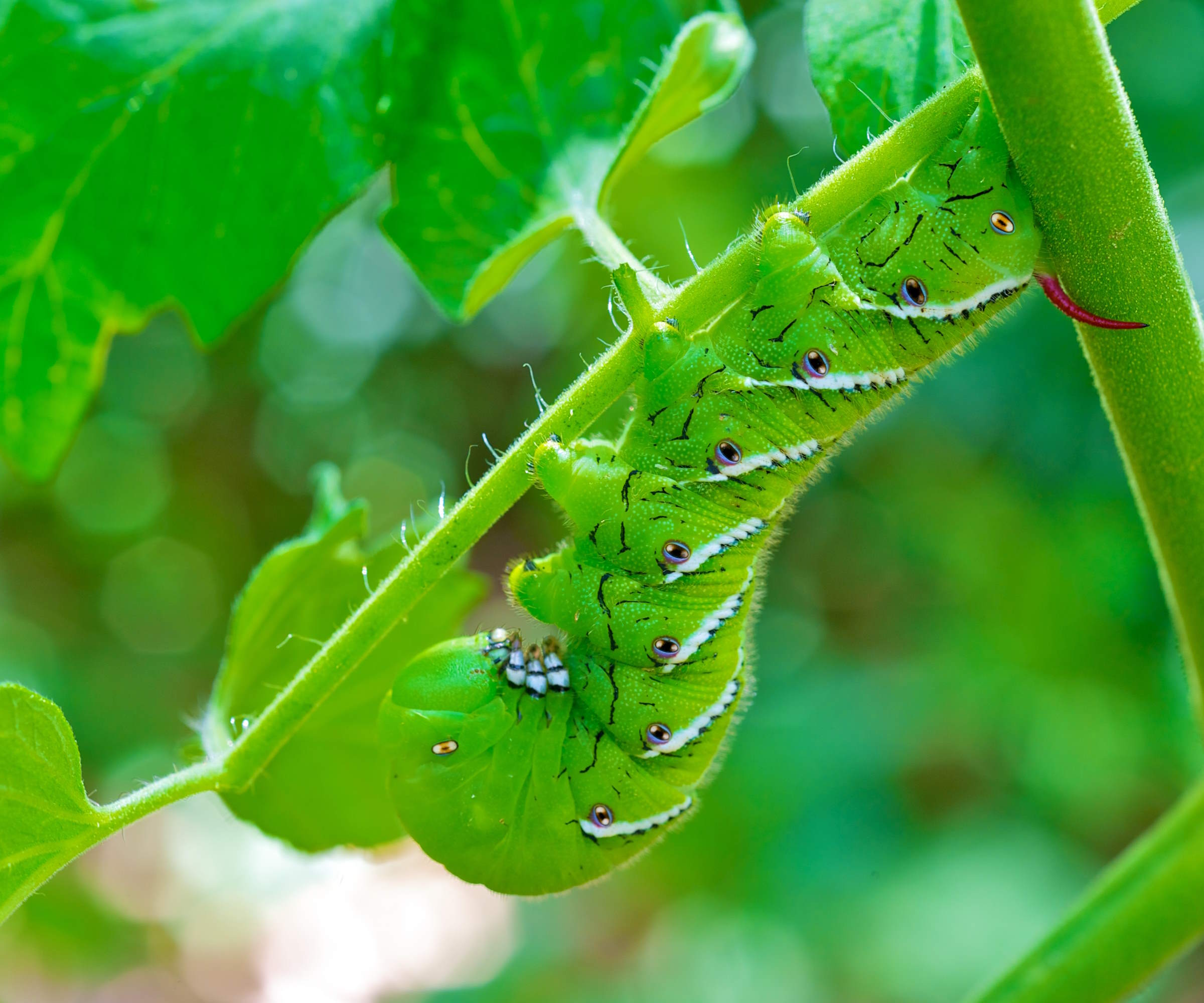
Do tomato hornworms just attack tomato plants?
No, tomato hornworms target other crops in the nightshade family too, including eggplants, peppers, potatoes and tomatillos. If you are growing nightshade plants, knowing what they look like and how to eliminate tomato hornworms is important.
What are tomato hornworms?

Tomato hornworms (Manduca quinquemaculata) are the larvae of the five-spotted hawk moth. They can measure 4-5 inches long and have pale green bodies that easily blend in with the foliage. Tomato hornworms have ‘v’ markings along the side of their body, black spots, and a distinctive black horn on the end of their body.
The life cycle of a tomato hornworm sees it emerge as an adult moth in the spring. These tomato pests, which have a 4-5 inch wingspan, and are grey-brown with yellow spots, lay huge numbers of oval, light-green eggs on the underside of leaves.
The eggs hatch into larvae that feed ferociously as they quickly develop into caterpillars. The caterpillars then burrow into the soil when they are mature to enter the pupae stage, emerging as moths and starting the cycle again. The fast life cycle of a tomato hornworm means there can be two generations per year.
The signs of tomato hornworm damage
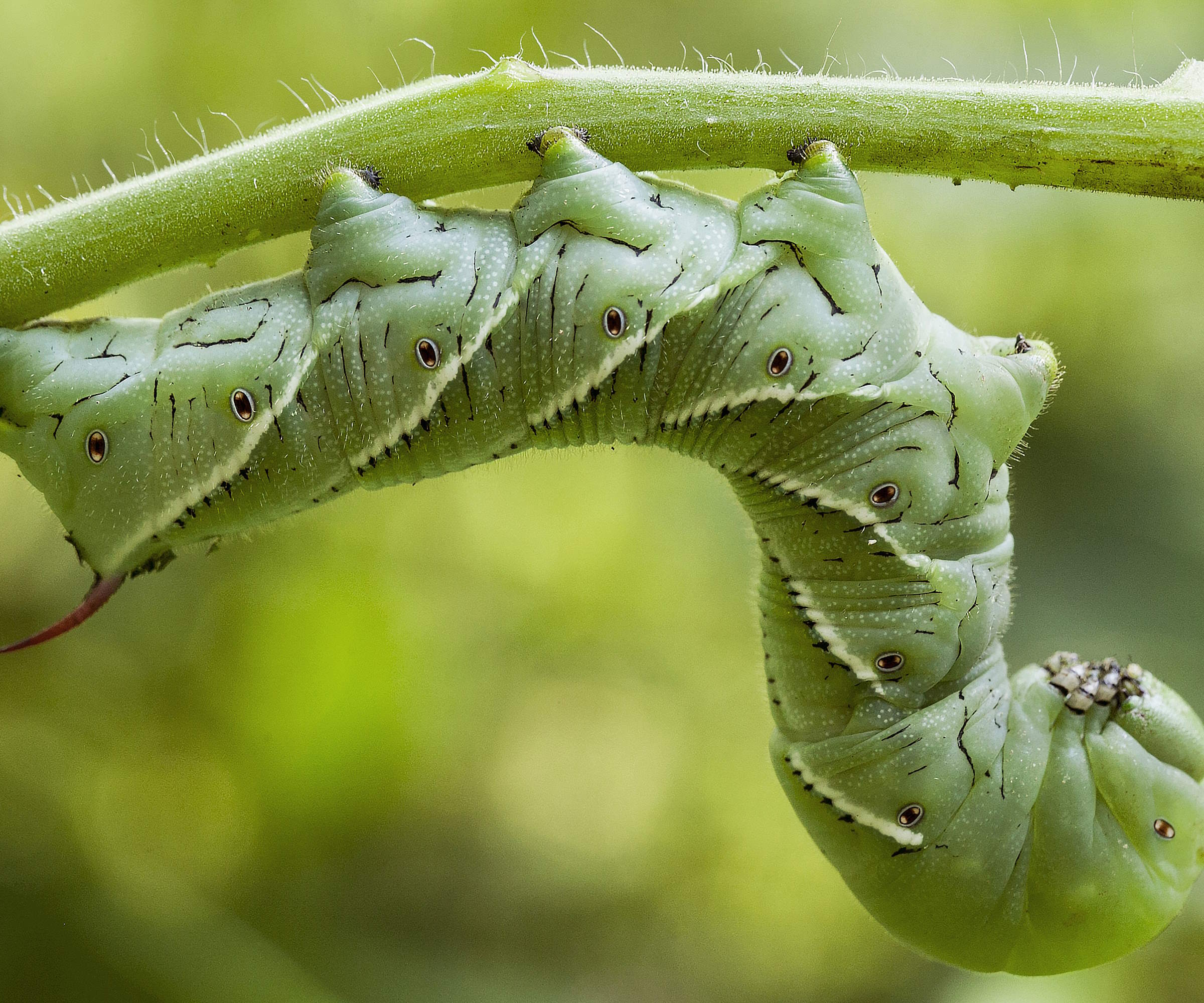
Emily Jones, tomato expert and founder of Tomato Mentor, warns; ‘These large green caterpillars can devour tomato leaves and fruit, causing extensive damage. They are often camouflaged and can be difficult to spot.’
While the caterpillars themselves may be difficult to spot, the signs that they are on your tomato plants are much easier to identify. Susan Mulvihill, author of The Vegetable Garden Pest Handbook, highlights three key things to keep your eyes peeled for:
- You’ll notice fruits with large bites out of them.
- The leaves will have a lot of chewing damage, sometimes to the point of being completely defoliated.
- The hornworms blend in with their surroundings so look below the damage for dark frass (the droppings produced by the larvae).
Regularly checking plants for signs of infestation means you can act quickly if anything is spotted. When it comes to their camouflage, Susan recommends: ‘If you go out to your garden at night with a UV flashlight, it’s easier to spot the caterpillars.’
Look for signs of chewed leaves starting at the top of the plant - where tomato hornworms often begin feeding from - and signs of frass further down the plant. Inspecting underneath leaves can help you find sneaky hornworms or collections of eggs.

Susan Mulvihill is the author of 'The Vegetable Garden Problem Solver Handbook', available at Amazon, and gardens on 5 acres in Spokane, Washington State. She has also been writing garden columns for the Sunday edition of The Spokesman-Review newspaper for nearly 20 years.
How to get rid of tomato hornworms
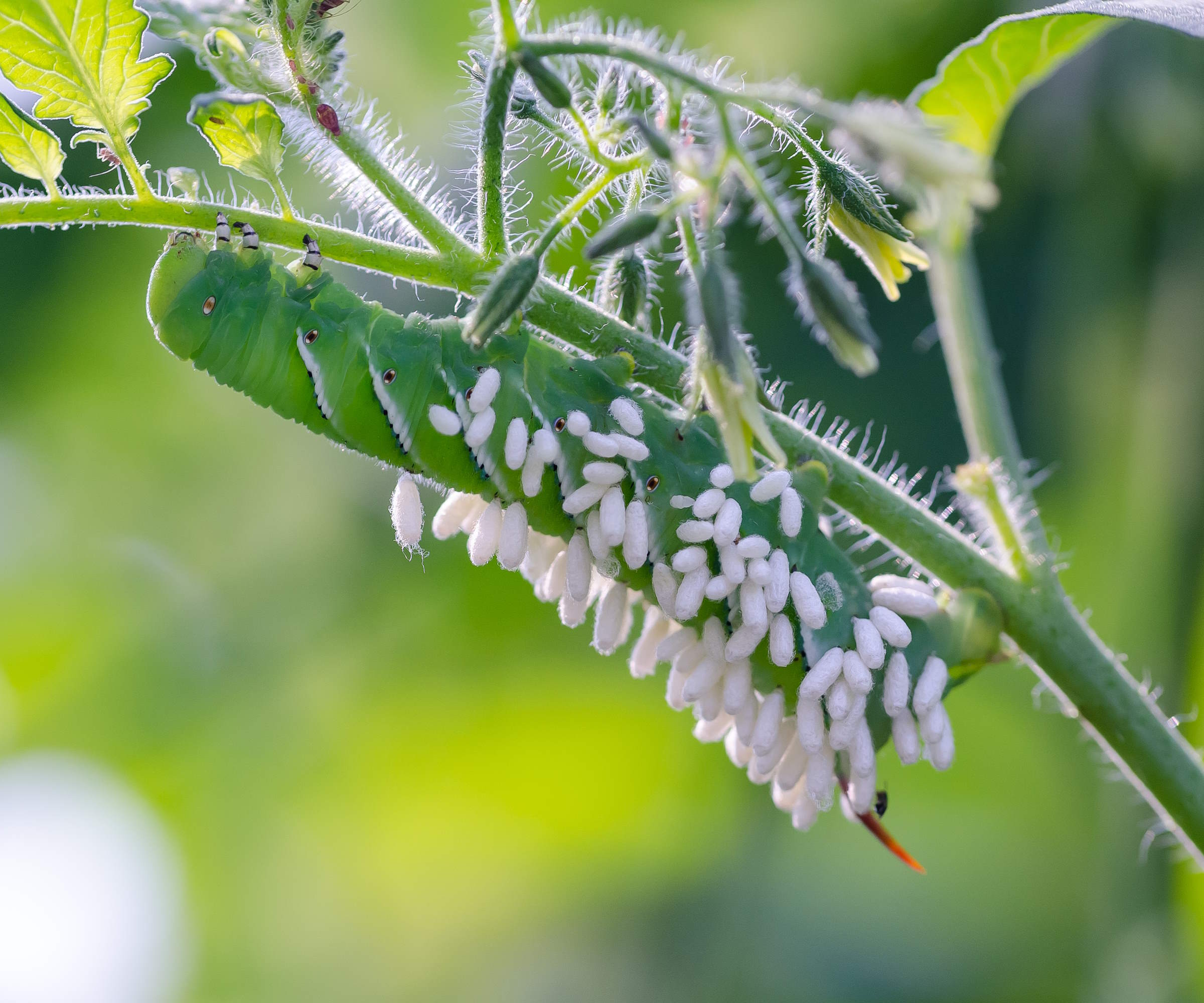
There are a few tools at your disposal to help fight against tomato hornworms. Emily Jones recommends: ‘For larger pests – such as hornworms, caterpillars and snails – a simple method to deal with them is handpicking and removing from the garden.’
Handpicking is an effective but time-consuming method and the size of tomato hornworms makes them easier to spot, despite their camouflage. Scour plants to pick off the tomato hornworms and place them in a container filled with soapy water.
There are products you can spray that can help to control the pest. Susan Mulvihill highlights one particular organic pesticide that can be successful. ‘Apply Bacillus thuringiensis (Bt) to the foliage,’ she says. ‘Bt has beneficial bacteria that can target the caterpillar stage of insects.’
Bt is most effective against caterpillars as the product needs to be consumed to be effective. As well as Bt, neem oil and insecticidal soap can be effective against young caterpillars.
Companion planting tomatoes can attract predatory insects like lacewings and ladybugs that will feed on the eggs and young caterpillars. You can attract ladybugs and lacewings to your yard by planting marigolds, geraniums, nasturtiums and herbs such as dill and fennel.
Tomato hornworms are targetted by parasitic wasps that lay their eggs in the caterpillar. The larvae will feed on the hornworm and parasitic wasps make an excellent form of natural pest control. As well as tomato hornworms, there are types of parasitic wasps that can get rid of aphids, whiteflies, and other common pests.
You can purchase parasitic wasps to release and attract them naturally to your yard with additional support from companion planting. Tomato hornworms affected by parasitic wasps will have small white eggs attached to their back.
As the adult moths emerge in spring after spending winter in the soil, tilling the soil at the start of the year before planting tomatoes, and at the end of the season, can eradicate pupae overwintering in the ground and stop them from emerging as moths to start the life cycle of a tomato hornworm.

Emily has been growing tomatoes for more than 30 years, and she founded the blog Tomato Mentor as a way of helping others to improve their growing methods. She regularly writes about everything from watering tomato plants and common tomato pests to the best growing techniques people should use in their own space.

A ready-to-use spray product that controls cabbage looper, hornworms, tent caterpillars and more. It causes no harm to birds, earthworms, or beneficial insects
FAQs
Can tomato hornworms bite?
Tomato hornworms do not bite, or sting with the little horn on their posterior, and the pests are harmless to humans.
As well as pests like tomato hornworms, and others, there are also diseases, such as blight, powdery mildew and blossom end rot, that may strike. Thankfully, ensuring good air circulation, correct watering, and properly fertilizing tomatoes can help avoid many of these troublesome tomato diseases. To find out more, see our dedicated article on identifying issues and preventing diseases from striking your tomato plants.
Sign up to the Homes & Gardens newsletter
Design expertise in your inbox – from inspiring decorating ideas and beautiful celebrity homes to practical gardening advice and shopping round-ups.

Drew’s passion for gardening started with growing vegetables and salad in raised beds in a small urban terrace garden. He has worked as a professional gardener in historic gardens and specialises in growing vegetables, fruit, herbs, and cut flowers as a kitchen gardener. That passion for growing extends to being an allotmenteer, garden blogger, and producing how-to gardening guides for websites. Drew was shortlisted for the New Talent of the Year award at the 2023 Garden Media Guild Awards.
-
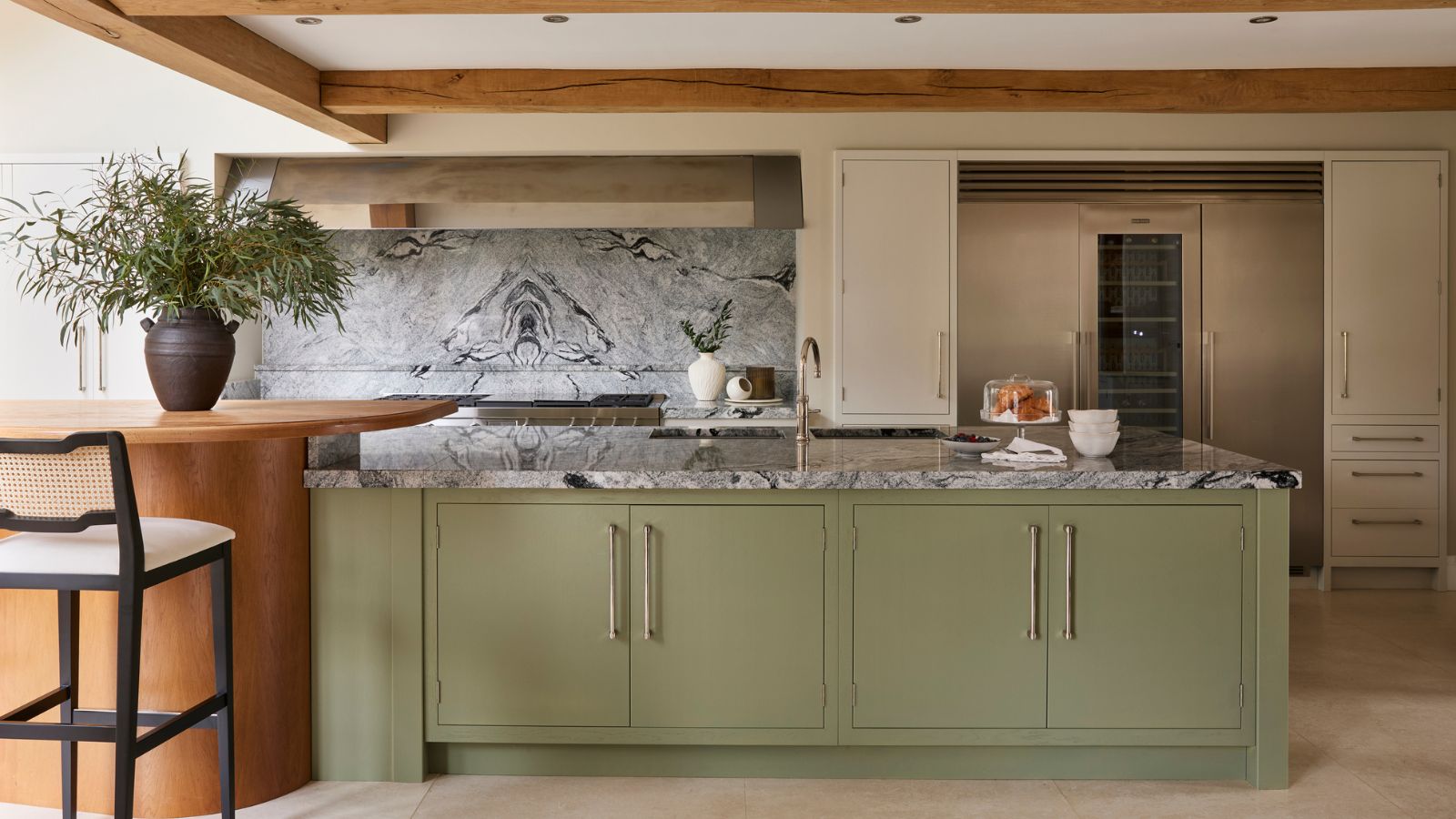 5 freezer cleaning mistakes you must avoid – or risk compromising your food quality and shortening the lifespan of your appliance
5 freezer cleaning mistakes you must avoid – or risk compromising your food quality and shortening the lifespan of your applianceAvoid these blunders for a safer kitchen
By Seraphina Di Mizzurati
-
 What is an island bed? This clever garden design trick can add privacy and drama to any backyard
What is an island bed? This clever garden design trick can add privacy and drama to any backyardCreate a long-lasting, low-maintenance and visually appealing island bed that also serves a purpose in the garden
By Sarah Wilson
-
 This $20 pop-up greenhouse from ALDI is perfect for small yards – it will turbocharge your tomato harvests this summer
This $20 pop-up greenhouse from ALDI is perfect for small yards – it will turbocharge your tomato harvests this summerEasy to use and compact to store, pop-up greenhouses are ideal for patio or balcony gardeners
By Thomas Rutter
-
 Small yard but want to grow your own crops? This wooden cold frame is 40% off at Wayfair – and it's perfect for tiny patios and apartments
Small yard but want to grow your own crops? This wooden cold frame is 40% off at Wayfair – and it's perfect for tiny patios and apartmentsCold frames are a sensible investment for any gardeners struggling for space on balconies, backyards or patios
By Thomas Rutter
-
 7 of the best tomatoes for growing in pots – expert growers pick their top varieties ideal for large harvests from containers
7 of the best tomatoes for growing in pots – expert growers pick their top varieties ideal for large harvests from containersYou can enjoy bumper homegrown harvests in small spaces
By Drew Swainston
-
 These 5 plants can help you get the best, and potentially tastiest, broccoli ever – discover what to plant with broccoli, and what to avoid
These 5 plants can help you get the best, and potentially tastiest, broccoli ever – discover what to plant with broccoli, and what to avoidOur selection of vegetables, herbs, and flowers is perfect for companion planting with broccoli
By Drew Swainston
-
 I just discovered the best non-toxic product for getting rid of ants in your yard – and you probably already have it in your bathroom cupboard
I just discovered the best non-toxic product for getting rid of ants in your yard – and you probably already have it in your bathroom cupboardThis household item is an effective ant deterrent that doesn't leach harmful chemicals into your soil
By Tenielle Jordison
-
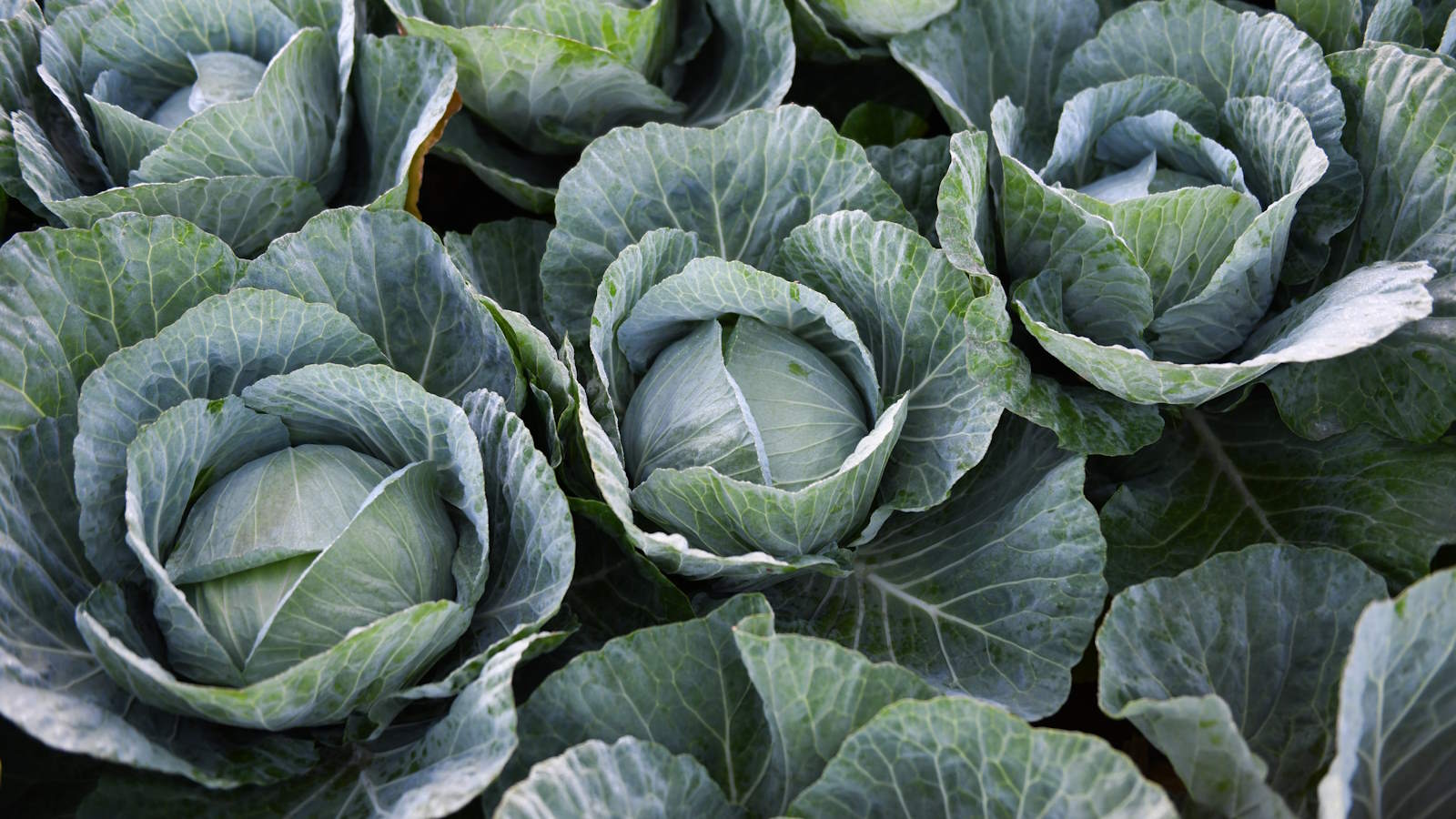 How to grow cabbages in containers – expert tips for top harvests in small urban spaces
How to grow cabbages in containers – expert tips for top harvests in small urban spacesYou can grow lots of different cabbages in pots, troughs, grow bags, or buckets
By Drew Swainston
-
 You'll get the best homegrown tomato crops if you plant them next to this one flower – discover why these two are a dream combination
You'll get the best homegrown tomato crops if you plant them next to this one flower – discover why these two are a dream combinationYour tomato plants will be pest-free and covered in fruits
By Drew Swainston
-
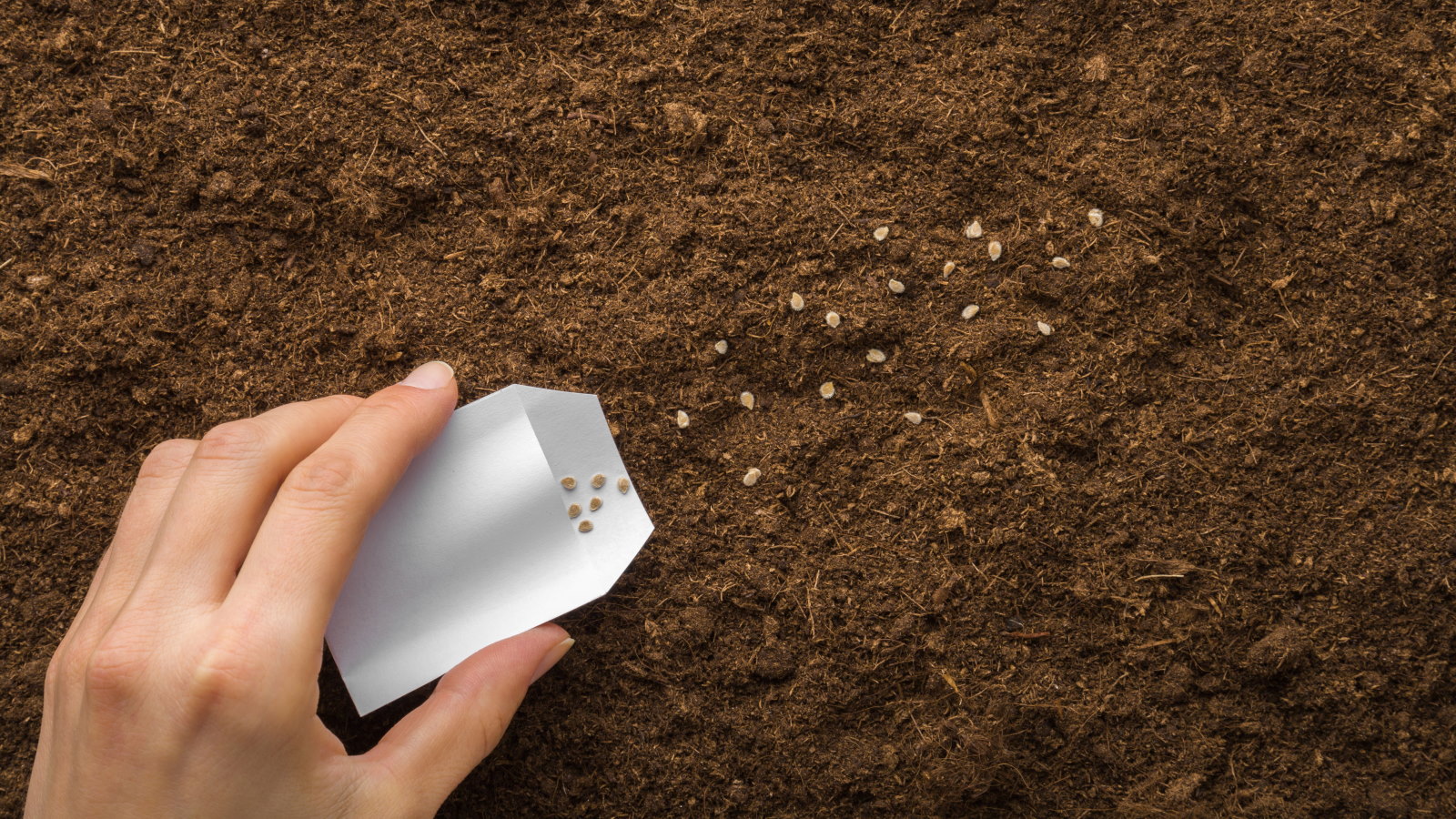 Direct sowing vs transplanting – our grow-your-own expert advises which is best, and shares 5 veggies you should always sow directly
Direct sowing vs transplanting – our grow-your-own expert advises which is best, and shares 5 veggies you should always sow directlyBoth approaches to sowing vegetables have pros and cons
By Drew Swainston
